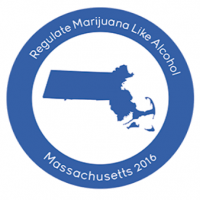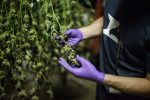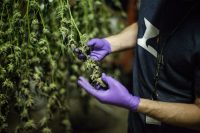Cannabranding is buzzy. In the United States and in Canada, it is a vertical that is developing fast along with the multi-billion dollar legitimizing cannabis market. In both the United States and Canada, digital marketing to promote brands is a hot topic.
Social media has firmly rolled over traditional advertising barriers even as it still remains a landmine. And if there were ever a “fun” brand to be associated with, cannabis carries a lot of plusses. Starting with the rapidly fading stigma. According to Adweek, there were 170 advertising and marketing agencies picking up national cannabis business in the United States, with additional firms serving smaller firms or markets at the beginning of the year.
Yet battles that should be dated with the year 2017 in the mirror, are still raging and underway even in these jurisdictions. No matter what or where, advertising remains complicated. Beyond the American hemisphere, the issue of branding is a still-slumbering giant that may yet awake in the second part of the next decade. For the most part, that will have to await the advent of recreational use, at least within Europe.Are there successful brands already established in the world of cannabis? Of course.
How brands enter the market in the EU in fact, based on their social media and internet influence elsewhere, is very much a part of that discussion. So far in Europe, there has been no federal recreational reform. Medical use is still in front of legislatures. As a result, that means that more traditional social media efforts in particular, are verboten when launched in country.
With foreign firms now entering the EU market, the big question is, can such firms establish a brand presence here (or for any of their products?) Or will that too, be launched from abroad?
And how exactly will that fare in Europe, particularly in places like Germany, where the overwhelming pressure is on to treat cannabis just like another narcotic? And in particular, a generic drug.
A Brief History of Advertising in Cannabis
Hard as it is to believe, just four years ago, there was no legal, functioning recreational market anywhere. Weedmaps and Leafly were the only game in town when it came to advertising, along with growing free press coverage, in particular for small companies who were starting to establish market presence in the legalizing cannabis business. In fact Weedmaps and Leafly can be effectively credited, certainly in the United States, with putting cannabis advertising, along with dispensaries and prescribing doctors, on the map.
The impact of a California media industry on this issue, especially with state recreational legalization imminent, cannot be underestimated. However, these days, it is not the only game in town.
Fast forward to 2017, and the world of cannabranding has exploded, no surprise, in the world of social media. “Bud porn” proliferates on Instagram. In fact, an Instagram account, along with YouTube videos, Facebook posts and Twitter pictures are derigeur for pot companies these days as much as they are for anyone else. Free media is still a force.
 However even here, the rules and enforcement of the same, at least in the United States, are still shadowed with uncertainty. Federal Schedule I status means that technically, even the big social media giants are in the same boat as traditional advertising mediums (like print or even internet-based media). Section 843 of the Controlled Substances Act specifically prohibits “communications facilities” from advertising Schedule I drugs. However the internet has never really been brought under FCC guidelines – and on many fronts. See “bud porn”, as the first example. Cannabis “advertising” such as it has clearly developed, is absolutely another one.
However even here, the rules and enforcement of the same, at least in the United States, are still shadowed with uncertainty. Federal Schedule I status means that technically, even the big social media giants are in the same boat as traditional advertising mediums (like print or even internet-based media). Section 843 of the Controlled Substances Act specifically prohibits “communications facilities” from advertising Schedule I drugs. However the internet has never really been brought under FCC guidelines – and on many fronts. See “bud porn”, as the first example. Cannabis “advertising” such as it has clearly developed, is absolutely another one.
And into this gap have poured cannabis-branding initiatives galore. One of the most corporately ambitious so far? Netflix, with not only pot-branded entertainment, but its own brands of cannabis. It is far from the only one. Google Adwords also changed its policies with regard to medical advertising this year. The advent of a recreational market in California will absolutely drive this issue globally. But beyond California state borders, how will more local laws be enforced? And by whom? Is anyone at the FCC or Jeff Sessions’ Justice Department considering the national impact of any cannabis branding launched in California, for example? And where would they start? Would corporate advertising that is present at national conferences be targeted too? Along with the growing cannabisHow will such firms establish branding in a world so totally off-limits to “brand” advertising? conference economy itself which is already multi-state? The situation is already slippery. Abroad, could or would BfArM, the German federal agency overseeing the regulation of narcotic drugs (including cannabis), bring suit against Facebook for distributing California-sourced advertising for an Australian firm now doing business in Europe?
Clearly, there are landmines everywhere one looks. And not just for the big guys. The path is still littered with issues and problems for smaller, U.S.-based initiatives. Accounts can be blocked arbitrarily on social media and have been, such as on Facebook. In sum, however, it is also very clear that the preponderance of a tide is shifting. The industry as well as internet-based branding, is winning.
Especially as recreational reform blooms in Canada and California.
Advertising, in a digital world, has no borders. And cannabis branding is about to test exactly how accurate that mantra is. Or at least how much the location of one’s server counts. And it may be that because of this issue, the entire enchilada is about to jump the shark, if not a few international borders.
The Awakening Canadian Giant
North of the American border, the great Canadian recreational cannabis experiment is more than just in the offing. The train is puffing with steam at the station. The impact of a federally legal, recreational market that Canada will become as of next summer, cannot be underestimated from the advertising and branding front.
 First, it means that Canadian companies will be able to advertise and promote their brands to at least a domestic audience. Granted, they will undoubtedly face the same issues as liquor companies in some ways. But promoting specific brands and labels has already hit the Canadian social media universe. See the efforts of all the major pot-producing companies with domestic server and corporate presence.
First, it means that Canadian companies will be able to advertise and promote their brands to at least a domestic audience. Granted, they will undoubtedly face the same issues as liquor companies in some ways. But promoting specific brands and labels has already hit the Canadian social media universe. See the efforts of all the major pot-producing companies with domestic server and corporate presence.
In turn, this has further opened another question. If digital and social media has no boundaries, what does that mean for the rest of the world? Particularly those countries now also watching the larger Canadian corporates establish both growing and distribution presence within their borders, and with strict advertising bans on cannabis domestically. That includes bans on advertising marijuana as medicine.
The Most Compelling Cannabis Brand Remains Legalization
Are there successful brands already established in the world of cannabis? Of course. Think only of the many celebrity-backed brands (even for medical) that you have probably heard of in the last few years. There are likely to be more.
However the reality is that in many jurisdictions, starting with Germany, such branding theoretically at least, stops at the border. The many firms who are establishing presence here on the distribution and potentially cultivation side, do nothing more than promote their company names at industry events.
How will such firms establish branding in a world so totally off-limits to “brand” advertising?
For now, one of those answers is to establish a presence as a serious pharmaceutical company. Another of course, is to become more vocal over the need for further reform and patient access. So far, that issue has remained one mostly vocalized by reform groups on the ground. That could change, particularly with further delays in implementing medical programs in Europe. Celebrity-backed appearances in media on this issue go far.
And for the meantime? Branding specialists will have to hope that advertising campaigns developed off-shore begin to meet targeted European patient groups.
Even if the first message is the concept of cannabis as legitimate medicine.

































